#nhrda
Text
MAHLE Motorsport Introduces New Performance Cast Powerstroke PowerPak Sets
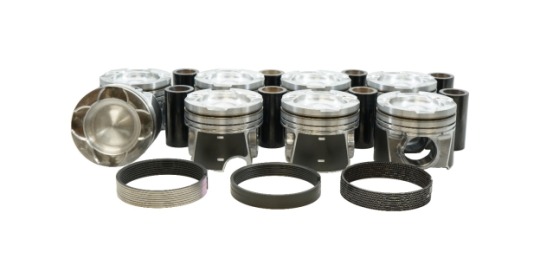
Fletcher, NC, (February 7, 2023) – MAHLE Motorsport is pleased to announce four new performance cast PowerPak piston sets for the 6.0L and 6.4L Ford Powerstroke. Developed in direct response to consumer demand for diesel motorsports competition, the new 6.0L pistons are based off the 2004+ design, and the 6.4L pistons are based off of the MaxxForce design that provides maximum strength and superior durability. All four sets offer incredible versatility, allowing a daily driver to become a weekend warrior for drag, dyno, or pulling competitions.
These castings retain the OEM steel top ring insert for the longevity of the top ring groove and are engineered with fully radiused valve pockets to reduce stress and fatigue cracking. Also, a lower compression ratio (.5 to 1.5 points) allows more flexibility for high output tuning, MAHLE Motorsport’s Powerstroke piston sets provide unrivaled value, strength, durability, and versatility, unlike any other shelf stock piston on the market.
Designed with performance bowls that reduce erosion issues caused by high pressure, long duration, and advanced injection timing, and available with 0.100” deep intake and exhaust valve pockets that work with many performance aftermarket camshafts.
The 6.0L PowerPak set is cast from MAHLE’s proprietary M124 alloy and the 6.4L Powerstroke set is cast from M142 alloy. Both are designed for a 4.134 stroke and 6.929 rod. The CR is calculated with 0.0008” piston protrusion above deck and 0.059” head gasket thickness. As with all PowerPak piston sets, the pistons are treated with MAHLE’s proprietary GRAFAL® skirt coating for reduced drag and increased scuff resistance. Heavy-duty DLC-coated tool steel wrist pins, clips, and a high-performance ring set rounds out this value-packed PowerPak.
MAHLE Motorsport Program Manager, Joe Maylish, says, “Diesel motorsports is all the rage from NHRDA, ODSS to Ultimate Callout Challenge. We’re excited to announce that MAHLE Motorsport is coming in strong for 2023 with new diesel piston sets in time for this year’s race season. So, if you are a seasoned competitor needing an edge or just thinking about competing this year, our new Powerstroke kits are designed to give you the edge on the weekends and improve performance throughout the week.”
For more information about MAHLE Motorsport’s full line of Ford Powerstroke cast PowerPak Piston sets click here, view this video or call MAHLE Motorsport toll-free at 888-255-1942. For more information about the full line of MAHLE Motorsport products download the 2023 Application Guide. To keep up with the latest from MAHLE Motorsport on social media, visit Facebook or Instagram or follow #mahlemotorsports.
Read the full article
0 notes
Video
#Repost @spooligandiesels • • • • • @dieselfreakllc knows how to let loose!! #spooliganapproved - Tag us in all your diesel performance photos and videos and check out some SPOOLIGAN merch online! www.spooligandiesels.com - #dieselpower #dieselnation #dieselperformance #keepstrokin #truckin #nastytrucksnation #dieseltrucks #dieselracing #nhrda #powerstroke #cummins #duramax #dieselkings #dieseladdiction #nastytrucksnation #powerstrokenation #diesellife #becauseracetruck #odss (at Lucky’s Barber Shop) https://www.instagram.com/p/B0op-lunBEW/?igshid=1l4lm37wdr098
#repost#spooliganapproved#dieselpower#dieselnation#dieselperformance#keepstrokin#truckin#nastytrucksnation#dieseltrucks#dieselracing#nhrda#powerstroke#cummins#duramax#dieselkings#dieseladdiction#powerstrokenation#diesellife#becauseracetruck#odss
3 notes
·
View notes
Text

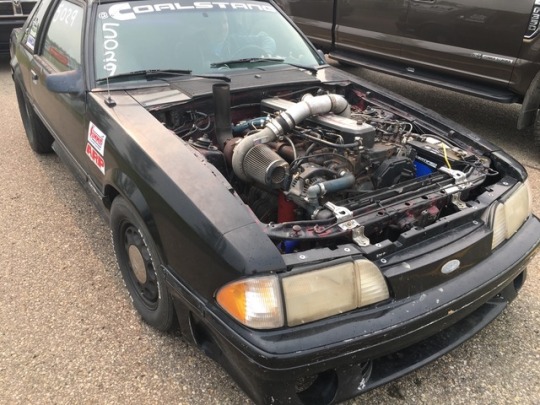
5.9 Cummins powered fox body at the NHRDA diesel drag race at Castrol Raceway, Edmonton Alberta. Don’t get too excited. I think it just laid down a 15 second pass. lol
18 notes
·
View notes
Video
Oklahoma Diesel Nationals #Repost from @nhrda_diesel ... NHRDA is headed to Tulsa Raceway this weekend is the Oklahoma Diesel Nationals. Get tickets online and save 20% off admission use promo code NHRDA. www.nhrda.com #tulsa #tulsaracewaypark #oklahomadieselnationals #oklahomadiesel #nhrda2018 #nhrda #dieseltv #dieseltruck #dieselpower #dieseltrucks #dragracing #sledpulls #cummins #diesellife #cumminsnation #cumminspower #powerstroke #powerstrokenation #powerstrokediesel #powerstrokearmy #duramax #duramaxnation #duramaxtrucks #hotshotssecret @hotshotssecret @masstraction (at Tulsa Raceway Park)
#oklahomadiesel#duramax#cumminspower#nhrda2018#duramaxtrucks#sledpulls#duramaxnation#powerstrokediesel#diesellife#powerstrokenation#dieselpower#powerstrokearmy#oklahomadieselnationals#dieseltv#tulsa#nhrda#cummins#hotshotssecret#powerstroke#dieseltrucks#tulsaracewaypark#dragracing#repost#dieseltruck#cumminsnation
3 notes
·
View notes
Video
Dumb fun at the nhrda diesel drags
2 notes
·
View notes
Link
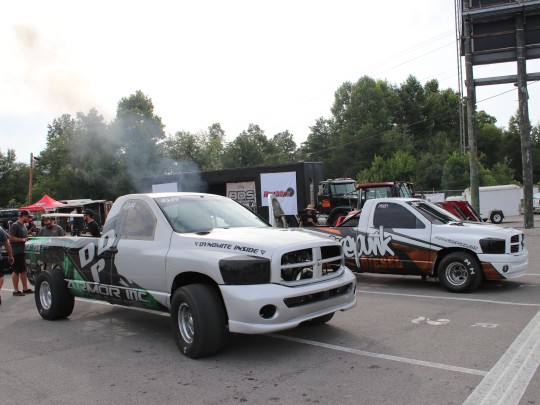
Great article of Donavan Harris
Traveling all the way from Canada, Donavan Harris is a three-time UCC competitor. Harris has been racing diesel trucks since 2009 and has won and placed well at events all over North America. He won five consecutive years at the Canadian Pro Street Championships and won the 2010 NHRDA World Finals Pro Street class. The UCC competition truck is a 2008 standard cab 4WD Dodge Ram that has gone on a serious diet to shed weight and improve performance. It boasts a stout 6.7L Cummins engine under the hood that is backed by a Dodge 48RE transmission.
At the first UCC in 2016, Harris’ best event finish was 4th place in the sled pull with a hook of 346 feet. He reached 1,525 HP on the dyno taking 12th place and hit the drag strip with a finish of 10.21 seconds landing him in 8th place. He finished the event taking 4th place overall and soon repeats himself at UCC 2017 by taking 4th place overall as well. In 2017, Harris took it up and notch and placed 2nd in the sled pull with a hook of 312.11 feet, only 9 feet from taking the win. He placed 10th on the dyno hitting 1,625 HP and placed 3rd on the ¼ mile drag with a time of 9.52 seconds. Harris and his team were ready to come back for more at UCC 2018.
In 2018, Harris and his team traveled to Indy again for our third UCC competition and placed 6th overall. On the ¼ mile drag strip, he placed 8th with a time of 8.58 seconds. He also placed 11th on the dyno maxing out at 1,813 HP, almost 188 HP more than the previous year. Harris came in 5th place with a hook of 293.58 feet and took 6th place overall for the event. We can’t wait to see what he and his team have in store for UCC 2019!
Harris and his team have the help and support of his partners and sponsors Armor Inc. Diesel & Suspension, Dynomite Diesel Products, D&J Precision Machine, Diesel Performance Converters, FASS Fuel Systems, Flo-Pro Performance Exhaust, Mishimoto, Nitrous Outlet, Snow Performance, TS Performance and Yukon Gear & Axle. Come see what Harris and Team Armor will be bringing to the table at our 4th annual UCC 2019!
3 notes
·
View notes
Video
youtube
Top Fuel 6.6L Duramax Dragster - Wade Moody
Wade Moody on his 6.6L Diesel Dragster. PPEI Kory Willis. From the moment diesel lovers began taking delivery of their Duramax-powered Chevrolet and GMC HDs back around the turn of the century, they knew GM’s 6.6L V8 was very different from the outdated 6.5L it replaced. At the time 2001, the Duramax was a marvel of an engine, introducing both common-rail injection and aluminum cylinder heads to the diesel truck segment. Now, some 20 years after bringing this technology to market, the Duramax remains one of the best platforms to make horsepower with, and you can find them in some of the fastest vehicles in all of diesel drag racing. Wade Moody’s NGM Diesel-backed, Flo-Pro and Industrial Injection-sponsored rail has been setting tracks on fire since 2016, when things really started to click for Moody and his team. After first dipping into the 6s with a 6.99 at the 2016 NHRDA Midwest Truckin’ Nationals, Moody has been gradually shaving tenths off of his E.T.s, as well as adding trap speed. In June of ’17, Moody flew through the traps at 200.77 mph, and almost exactly one year later he eclipsed the 1320 in 6.53 seconds. Not only is Moody’s rail the quickest (and fastest) Duramax drag racer on the planet, but it’s not too far off the pace of the overall record of 6.31 and 226 mph held by Scheid Diesel. Said to produce 2,100hp, the Duramax in Moody’s rail is pretty serious. It’s based on an NGM Diesel-designed, billet-aluminum block that makes use of a dry sump oil system. The reason behind the aluminum block is two-fold: weight savings and durability. Since introducing the first billet-aluminum Duramax block back in 2012, the folks at NGM Diesel have all but perfected them. Wagler rods, Diamond pistons, Industrial Injection injectors and CP3s and parallel (i.e. true twins) BorgWarner turbochargers sum up the major components that make this fire-breathing Dmax tick. The whole package is stuffed in an ’05 Spitzer chassis and bolted to a Rossler Transmissions TH400 with a Pro Torque converter. Moody’s one-of-a-kind dragster tips the scales at 2,500 pounds.
0 notes
Photo

Elnas ely nwarony el nhrda w sharafo fe5ady 😘😘😍 #friends #friendshipgoals (at الحى الثانى - مدينة العبور)
0 notes
Text
Diesel Swap Donors 101!
Take any preconceived notion you have about diesel engines being slow, smelly tractor engines out of your mind. We’re in the golden era of diesel performance, leaving behind yesteryear’s “diseasel” clatter traps for howling torque factories that conversely provide excellent efficiency despite their orbit-shifting potential. There has been a relatively recent carb-to-EFI movement in the light-truck market with the advent of electronically-controlled common-rail injection, which has superseded traditional mechanical injection with tight tuning control. With these modern diesels becoming common third-hand buys from junkyards and online classifieds, they’re starting to be popular in swaps that beg for not only something different, but an option that can step-up as a powerhouse with just a few modifications. People aren’t just using them for their tow rigs and 4×4 projects; we’re seeing regular efforts in motorsports too, and not just in trucks. We spoke with Fleece Performance based out of Brownsburg, Indiana, about the Detroit Three’s selection of popular diesel engines after we found their record-holding, 8-second Ford Lightning at PRI driven by Dustin Jackson.
Holding the NHRDA e.t. record at 8.09, Jackson’s Cummins-powered Ford Lightning caught our attention at last season’s PRI show.
A Freedom Racing Engines-built 6.4L Cummins powers the jet-black pickup. Starting life as a 6.7L, the block was immediately sleeved. The factory crank is still used in this 1,700hp application, and three turbochargers are used to inhale as much air as possible.
How Diesels Work
Diesel fuel comes from the same petroleum base as gasoline, but it’s a higher density distillation that contains more hydrocarbons per volume. Because the hydrocarbon molecule chains are longer and less volatile, the fuel requires more energy and heat to ignite, though it releases more energy per gallon of fuel than gasoline. Diesel’s low volatility is also what necessitates its sky-high compression ratio for ignition (to create enough heat in the whole cylinder to bring diesel up to its flash point), which by extension allows them to run without spark plugs, as there’s simply no need for another source of ignition.
Because of this, diesel engines can operate at incredibly lean fuel ratios thanks to direct-injection, allowing them to operate without a throttle-body metering the airflow, using only the fuel injected into the cylinder to regulate torque output. You may see a throttle-body on modern diesels, but this is largely to provide sufficient manifold vacuum to promote good EGR flow, but they are not the primary load-controlling tool. By parsing the amount of fuel injected, how long it’s injected, and when it’s injected relative to the crank angle, you can control the engine speed and torque output of a diesel instead of throttling airflow like in gasoline engines. Combined with their relatively high (17:1 to 25:1) compression ratio (our truck engines here are on the lower end of the scale), the pumping losses saved by ditching the throttle plate mean that diesels are incredibly efficient internal combustion engines.
Mechanical vs. Common Rail Injection
No matter which engine family you’re talking about, the subject of injection pumps will invariably come up to mark a turning point in diesel fueling tech. Traditionally, diesels use a small injection pump to individually drive each injector—glorified poppet valves essentially—opening once the injection pump builds enough pressure to overcome the spring pressure against the needle valve inside the injector nozzle. These systems are robust and dead-nuts reliable, but like carburetors, lack live tuning and limit finesse. Ford had a unique injection system, but we will discuss that later.
Common rail, in short, is just like gasoline EFI. The injectors share a common fuel rail and are electronically triggered to dynamically control injection timing (start and finish) and duration. Today, everyone uses a common-rail fuel system to boost torque output, increase fuel economy, clean up emissions, and reduce that infamous diesel clatter soundtrack.
Exhaust Gas Temperature (EGT)
With direct injection, you have a limited amount of time to spray fuel in reference to Top Dead Center (TDC) where you’re making usable power. You can adjust when the injector begins firing (start of injection, SOI), how much fluid it moves (volume), how long it fires (duration), and when it ends its spray (end of injection, EOI), but there are of course limitations to each variable. Not unlike ignition timing (essentially what SOI is on a diesel), there’s only so early that you can begin igniting the fuel before you’re firing the mixture too early and working against yourself, or worse, creating knock or excessive cylinder pressure. When tuning with stock injectors, which will bottleneck fuel flow eventually even with increased injection pressure, you can increase horsepower and torque by increasing injection duration or stretching out EOI. The issue is that by stretching EOI, diesels have the tendency to continue burning fuel as the exhaust valve opens, unnecessarily raising EGTs with no tangible horsepower gain. It’s not just the fact that the mixture is running rich, like you see in “coal rolling” tunes, but the fact that it’s spraying fuel so late in the combustion cycle that lit exhaust gases overheat the exhaust valve and turbocharger, eventually causing catastrophic failure.
Cummins
Likely the first name that comes to mind when talking diesel engines is the B-series of Cummins straight-sixes: the monolithic powerhouses in the diesel world. Seven main bearing caps give the crank plenty of support for a lot of power and torque with stock hardware in the block. The early 12-valve variants will spit 500 hp to the pavement without a hitch, while the modern 6.7 can dial-up 1,000 hp—and you can reliably guesstimate that torque is nearly double those horsepower numbers. Which Cummins is right for you? “It all depends on what they want to do with it,” says Brayden Fleece, the co-founder of Fleece Performance. “If you want a bare-bones, zombie apocalypse vehicle, the 1994 to 1998 12-valve is the pinnacle. But we’re common rail people; we like wires. Honestly, they’re cleaner, they run better, and they can make more power. But there’s nothing wrong with a 12-valve; it’s an easy swap. The only hook-ups you need are for the fuel shut-off valve and the starter enable wire; that’s it, two wires.”
Cummins B-Series 1989 to 1998
Vehicle: Dodge Ram, D-series, W-series ¾ and 1-ton trucks
Displacement: 359 ci (5.9L)
Horsepower: 160 to 215 hp at 2,500 rpm
Torque: 400 to 440 lb-ft at 1,600 rpm
Bore: 4.02 in
Stroke: 4.72 in
Block: cast iron, I-6
Cylinder head: cast iron, 12-valve
Connecting rods: forged steel
Compression ratio: 17:1
Weight: 975 pounds
Note: The 1994 to 1998 comes equipped with the more desirable Bosch P7100 “P-Pump” injection pump, known for being robust and easily tuned with headroom for performance.
Cummins Interact System B-Series (ISB) 1998 to 2007
Vehicle: 1998.5 to 2007.5 Dodge Ram ¾ and 1-ton
Displacement: 359 ci (5.9L)
Horsepower: 215 to 325 hp
Torque: 420 to 610 lb-ft at 1,600 rpm
Bore: 4.02 inches
Stroke: 4.72 inches
Block: cast iron, I-6
Cylinder head: cast iron, 24-valve
Connecting rods: forged steel
Compression ratio: 17.2:1
Weight: 1,150 pounds (est.)
Note: The big update here is the 24-valve, push rod head. This was a transitional engine between mechanical and common-rail injection before moving to the 6.7L. It did eventually receive common-rail injection, and in the process gained throttle-by-wire and other modern controls over the course of several years. There’s also a major difference in piston crowns between the 2003-2004.5 and 2004.5 to 2007 5.9L Cummins found in third-generation (2002-2008) Dodge Rams. Fleece states the later “wide” bowl piston are more desirable than the “early” bowl, which has a throated, toroidal re-entrant bowl that’s good for emissions and packs the thickest meat around the ring lands, but limits the available window of injection timing, thus ultimate horsepower. This is important for ordering injectors, Brayden and Chase tell us, as the crown’s shape limits the width of the spay pattern. 500 hp is on-tap with just a tuner, with 700 being attainable with bolt-ons. It also has the desirable CM849 ECU that’s incredibly capable while also predating the later complexities of encrypted ECUs with tougher interlock systems (which does a digital roll to verify all CAN-Bus modules). This can present extra challenges in a swap, not a problem on the older ECUs.
Cummins Interact System B-Series (ISB) 2007 to Current
Vehicle: 2007.5 to current Dodge Ram ¾ and 1-ton
Configuration: overhead valve (OHV) pushrod I-6 with 24 valves
Displacement: 408 ci (6.7L)
Horsepower: 350 hp to 385 hp
Torque: 650 to 930 lb-ft
Bore: 4.21 inches
Stroke: 4.88 inches
Block: cast iron
Cylinder head: cast iron, 24-valve
Connecting rods: powdered-metal rods
Compression ratio: 17.3:1
Weight: 1,150 pounds
Note: 1,000 to 1,200 hp with bolt-ons is possible with careful tuning. ECU tuning is more complicated with a myriad of back-up tuning tables to cover a wide variety of operating conditions. “The CM2100 is not a bad ECU either, and that one we’ve got spinning 5,500 rpms if you need it,” notes Brayden.
Duramax
General Motors’ Duramax line of turbo-diesel V8s were a massive step-up over the gutless Detroit Diesels sold from 1982 to 2000. Designed from the ground-up for the light-duty market in partnership with Isuzu, the Duramax shaved weight compared to its competition and became a favorite for its robust power. Early versions were known for injector issues, but once dialed-in, the Duramax became a popular candidate in swaps thanks to its (relatively) car-friendly packaging compared to the tractor-ready Cummins.
Duramax 6600 LB7 and LLY, 2001 to 2006
Donors: 2001 to 2006 Chevrolet/GMC ¾ and 1-ton trucks and vans
Displacement: 403 ci (6.6L)
Horsepower: 300 to 310 hp
Torque: 520 to 610 lb-ft
Bore: 4.06 inches
Stroke: 3.90 inches
Block: cast iron
Cylinder heads: aluminum, 32-valve
Connecting rods: forged steel with cracked caps
Compression ratio: 17.5:1
Weight: 836 pounds
Notes: The LB7 and LLY are the earliest model of Duramax diesel and present a good value. The 2001 to 2004 LB7 had the notoriously difficult-to-access injectors, but a revision mid-year in ’04 solved the access issue with improved injectors with the LLY variant. Once this maintenance is taken care of, these excellent swap choices are capable of 600 hp. There’s easy real-time tuning via Moates Roadrunner, but ultimately the LB7/LL7’s injectors do not have as much headroom as the LBZ/LMM.
Duramax 6600 LBZ/LMM, 2006-2010
Donors: 2006 to 2010 Chevrolet/GMC ¾ and 1-ton trucks and vans (to 2016)
Displacement: 403 ci (6.6L)
Horsepower: 360 to 365 hp
Torque: 650 to 660 lb-ft
Bore: 4.06 inches
Stroke: 3.90 inches
Block: cast iron
Cylinder heads: aluminum, 32-valve
Connecting rods: forged steel with cracked caps
Compression ratio: 16.8:1
Weight: 836 pounds
Notes: The naming convention gets a little confusing in 2006; while the Duramax carried its LLY designation into 2006, GM later decided to rename the re-vamped 6.6L design LBZ. Most ‘06s should be de-tuned LBZs “mislabeled” LLY, but look at the eighth digit in the VIN for a “D” to check that you have the improved LBZ—a “6” in the tenth digit will confirm you’re looking at the 2006 split model year. You can also confirm an LBZ by its Bosch ECU, according to Brayden at Fleece. Updates include a strengthened block, stronger rods, and lower compression. In 2007, a Diesel Particulate Filter (DPF), an Exhaust Gas Recirculation (EGR) valve, and variable-geometry turbo were added. This would be the last of the pre-Diesel Exhaust Fluid era Duramaxes (DEF is urea injection in the exhaust to scrub Nitrogen Oxide emissions). This makes swaps simpler with less emissions equipment to possibly remove. Same easy tuning advantages as above, but a mild 63mm turbo upgrade (stock is 60mm) and a set of injectors nets a safe 700-plus horsepower.
Duramax 6600 LML, 2011-2016
Donors: 2011 to 2016 Chevrolet/GMC ¾ and 1-ton trucks and vans (to 2006)
Displacement: 403 ci (6.6L)
Horsepower: 397
Torque: 765 lb-ft
Bore: 4.06 inches
Stroke: 3.90 inches
Block: cast iron
Cylinder heads: aluminum, 32-valve
Connecting rods: forged steel with cracked caps
Notes: DEF joins an ever-increasing roster of emissions equipment, including a ninth injector in the exhaust to help fuel the DPF, a device that cremates soot in a controlled environment. Upgraded piezo injectors allow for more precise fuel control with multiple shots per power stroke. This is the most powerful GM diesel to-date, and included an exhaust brake to aid in braking with heavy loads (reduced heat in the brakes). Bosch, Motec, or another stand-alone ECU would be about necessary.
Duramax 6600 L5P, 2016 to Current
Donors: 2016 to current Chevrolet/GMC ¾ and 1-ton trucks and vans
Displacement: 403 ci (6.6L)
Horsepower: 445 hp
Torque: 910 lb-ft
Bore: 4.06 inches
Stroke: 3.90 inches
Block: cast iron
Cylinder heads: aluminum, 32-valve
Connecting rods: forged steel with cracked caps
Notes: We have not seen this new reactor swapped yet, Godspeed be with those who reverse-engineer this new generation of ECUs. That said, this is over 900 lb-ft. of torque with a warranty, wow! It’s no stretch to imagine four-digit torque figures with a simple tune.
Ford Power Stroke
To answer the focused, turbocharged competition from GM and Dodge in 1994, Ford answered with their all-new, Navistar-sourced Power Stroke 7.3L turbo-diesel V8s. Ford initially used a fuel injection system known as the hydraulically activated, electronically controlled, unit injector—or HEUI for short. It pressurized the engine oil though a crankcase-mounted, high-pressure pump to act on a hydraulic solenoid for the fuel injector’s needle. Think of it as an oil-driven syringe that pressurized the fuel in the injector instead of the injection pump before pumping it out of the nozzle. This design was unique to the light truck market, but allowed them to introduce the torquiest engine in its class at the time. While Ford hiccupped with the 6.0L variant, the later Power Strokes have proven to be much more reliable.
Engine: Ford 7.3L Power Stroke (International/Navistar T444E) 1994 to 2003
Donors: 1994 to 2003 Ford 3/4 and 1-ton truck, and Excursion
Displacement: 7.3L (444 ci)
Horsepower: 210 to 275 hp
Torque: 500 to 525 lb-ft at 1,600 rpm
Bore: 4.11 inches
Stroke: 4.18 inches
Block: cast iron V8
Cylinder heads: cast iron, 16-valve
Connecting rods: ’94 to ’00 (forged-steel) and ’01 to ’03 (powdered-metal)
Compression ratio: 17.5:1
Weight: 920 pounds
Notes: 450 hp is achievable with bolt-ons, but their Achilles heel are the injection seals. This can make hot-starts difficult, but this could also present an opportunity when buying a donor. Otherwise, the earlier forged rod examples are the choice pick. These also check the right boxes on the easy-to-swap list. They’re pre-emissions, robust, and easy to find.
Engine: Ford 6.0L Power Stroke, 2003 to 2007
Donors: 2003 to 2007 Ford ¾ and 1-ton trucks and Excursion; 2009 in E-class vans.
Configuration: OHV pushrod V8 with 32 valves
Displacement: 365 ci (6.0L)
Horsepower: 325 hp at 3,300 rpm
Torque: 560 to 570 lb-ft at 2,000 rpm
Bore: 3.74 inches
Stroke: 4.13 inches
Block: gray iron with bedplate
Cylinder heads: gray iron with four bolts per cylinder
Connecting rods: powdered metal
Compression ratio: 18:1
Weight: 966 pounds
Notes: The engine everyone loves to hate, the 6.0 was more powerful but ultimately more finicky than the stalwart it replaced. EGR cooler clogs that create coolant leaks in the induction side, a four-bolt-per-cylinder head-bolt pattern that lacked the clamping force with torque-to-yield hardware in severe conditions. That said, these donor trucks can be bought for next to nothing, and a possible EGR delete and head-stud kit from ARP help solve the major shortcomings.
Engine: Ford 6.4L Power Stroke, 2008-2009
Donors: 2008 to 2010 Ford ¾ and 1-Ton trucks (F-250 & F-350)
Configuration: OHV pushrod V8 with 32 valves
Displacement: 390 ci (6.4L)
Horsepower: 350 hp
Torque: 650 lb-ft at 2,000 rpm
Bore: 3.87 inches
Stroke: 4.13 inches
Block: cast iron with bedplate
Cylinder heads: cast iron, 32-valve
Connecting rods: powdered-metal rods
Compression ratio: 17.5:1
Weight: 1,130 pounds wet
Injection system: Siemens common-rail, direction injection with piezo injectors
Emissions equipment: Exhaust gas recirculation (EGR), diesel particulate filter (DPF), and fuel injector regeneration
Notes: With a wider bore and larger-diameter head bolts (less likely to stretch) than the 6.0, the 6.4 returned with its industry-first twin-turbo arrangement and new common-rail injection, ditching the previous HUEI system. Good for 550 hp with bolt-ons.
Ford 6.7L Power Stroke, 2011 to Current
Donors: 2011 to current Ford ¾ and 1-ton
Configuration: OHV, four pushrods per cylinder V8 with 32 valves
Displacement: 406 ci (6.7L)
Horsepower: 390 to 450 hp
Torque: 735 to 935 lt-ft
Bore: 3.90 inches
Stroke: 4.25 inches
Block: deep-skirt, compacted graphite iron (CGI)
Cylinder heads: aluminum, reverse-flow ports, 32-valve
Connecting rods: Mahle forged steel with clocked cracked caps
Compression ratio: 16.2:1
Weight: 970 pounds
Notes: This was a clean sheet re-think by Ford, solving the longstanding issues with the 6.0 and 6.4. Six bolts per cylinder clamp the head down with reverse-flow ports. The compound turbos were packaged between the banks of the heads to bottle in more heat energy compared to the long-distance plumbing with a traditional exhaust port location.
Automatic Transmissions
Each of the Detroit Three offer an overdrive transmission for their mainstay diesels, but if you’re swapping a diesel you may get stuck with something non-stock. “You can’t use something like a Turbo 400 with no lock-up converter, you’ll never fully realize the benefits of diesel torque with a slush box,” explained Brayden. He recommended something like the 4L80E which has been adapted behind almost everything while also being stout enough to handle a built diesel engine in lock-up. Additionally, Corey liked to use the Allison 1000 where possible, but its physical size may not work for some applications. Of course, there’s always a manual transmission.
The post Diesel Swap Donors 101! appeared first on Hot Rod Network.
from Hot Rod Network http://www.hotrod.com/articles/diesel-swap-donors-101/
via IFTTT
0 notes
Text
Hot Shot’s Secret Announces Title Sponsorship of Hole Shot Diesel Series on the West Coast
Hot Shot’s Secret Announces Title Sponsorship of Hole Shot Diesel Series on the West Coast
New series fills a two year void of diesel drag racing on West Coast
Mt Gilead, OH, (February 11, 2021) – Diesel drag racing is returning to the West Coast after a two year hiatus with a new series and title sponsor. Hot Shot’s Secret is proud to announce the title sponsorship of the Hole Shot Diesel Series. With the closure of the National Hot Rod Diesel Association (NHRDA), the West Coast was…
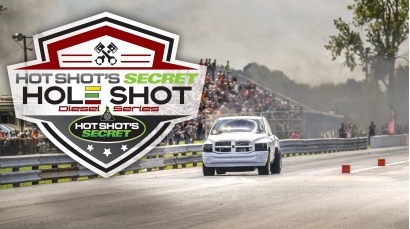
View On WordPress
#Clear Shot Customs Paint#Diesel Performance Industry#Golden State Diesel Fest#Hole Shot Diesel Series#Hot Shot&039;s Secret#Kyle Fischer#Sacramento Raceway Park
1 note
·
View note
Video
#Repost @spooligandiesels • • • • • @dieselshopct running a few cynlinders short with a blown turbo and still decided to #phakinsendit - #spooligandiesels #phakinsendit - Tag us in all your diesel performance photos and videos and check out some SPOOLIGAN merch online! www.spooligandiesels.com - #dieselpower #dieselnation #dieselperformance #keepstrokin #truckin #nastytrucksnation #dieseltrucks #dieselracing #nhrda #powerstroke #cummins #duramax #dieselkings #dieseladdiction #nastytrucksnation #powerstrokenation #diesellife #becauseracetruck (at Microtex Computers)
#dieselpower#nastytrucksnation#duramax#dieseltrucks#becauseracetruck#spooligandiesels#repost#keepstrokin#dieseladdiction#powerstroke#dieselracing#cummins#dieselkings#phakinsendit#powerstrokenation#diesellife#truckin#nhrda#dieselnation#dieselperformance
1 note
·
View note
Text
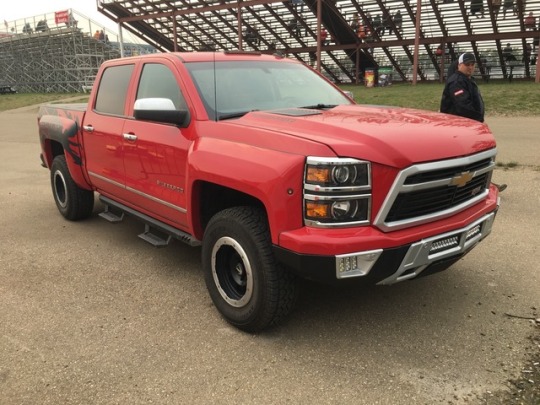
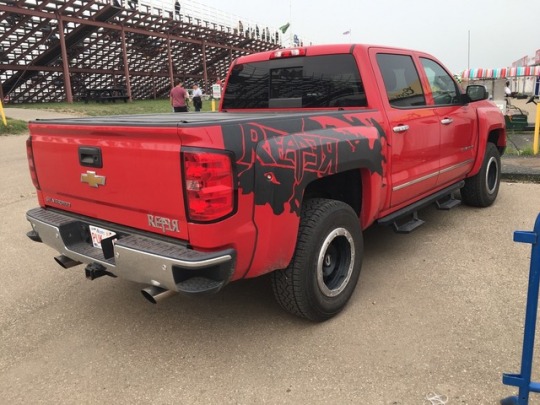
Chevy Reaper! At the Edmonton NHRDA diesel race.
14 notes
·
View notes
Photo
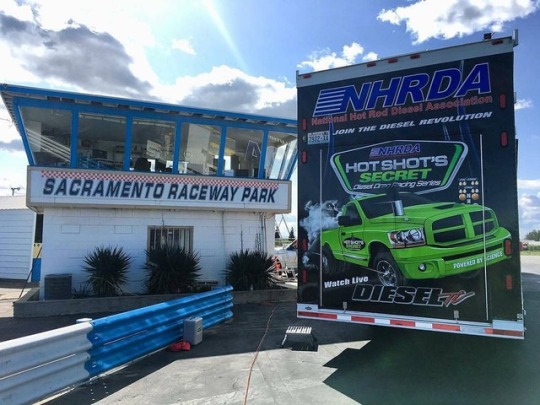
LXBN Sponsor Spotlight: #Repost from @hotshotssecret ... Hot Shot’s Secret has arrived. Looking forward to the weekend! #nhrda #hotshotssecretdragrace #dieseltv #poweredbyscience #frictionreducer #fr3 #lxbn (at Sacramento Raceway Park)
4 notes
·
View notes
Photo


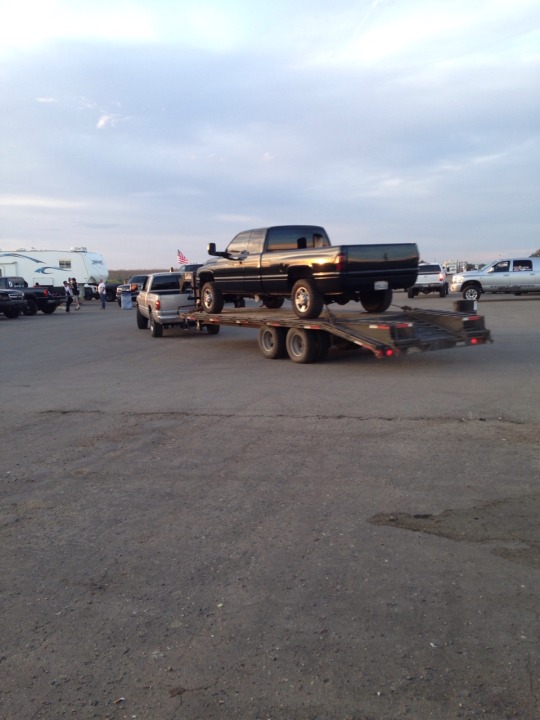
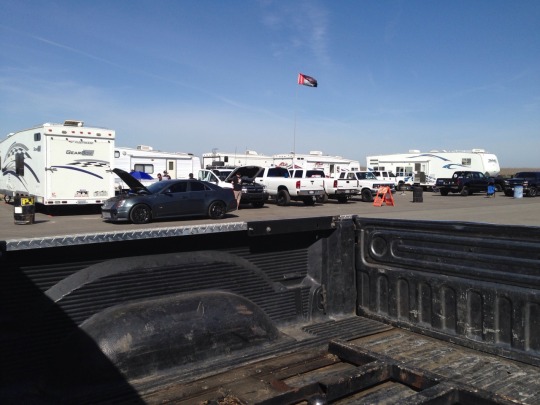
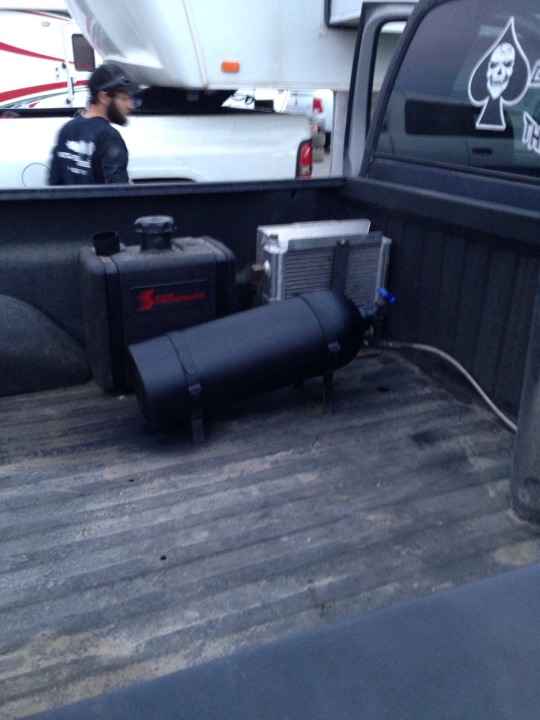
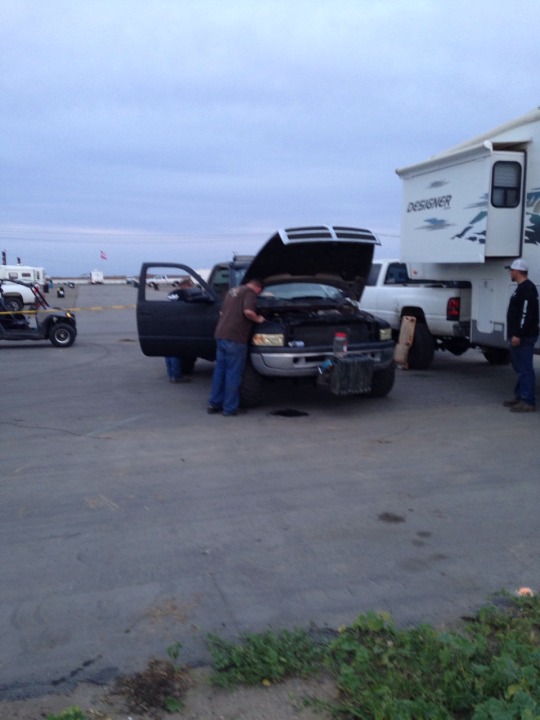

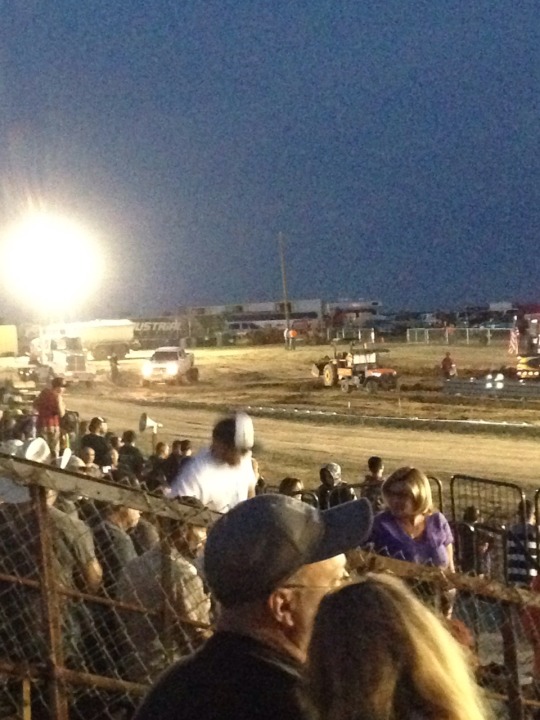

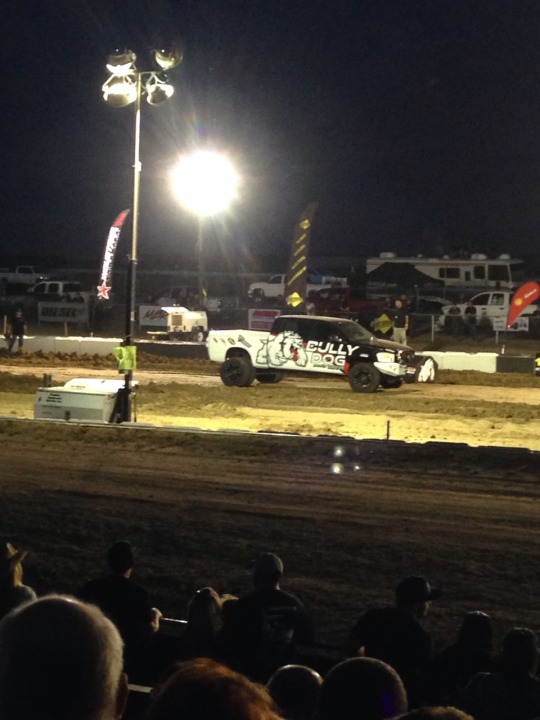
#nhrda#famoso#browns diesel#sled pull#apgsolar#apg solar#12 valve#common rail#Erick brown#bullydog#John eat eves#smoking ax
0 notes
Photo

#Repost @spooligandiesels⠀ • • • • • •⠀ Ole boy @bacablackp3arl went full #spooligan on This one. Glad he is ok and minor injuries. We know you and the @iidiesel will build it bigger and badder!! 2920!!!! Holy cow! A couple pics from @daily_driven_performance and @dieselworldmag ⠀ -⠀ ⠀ #spooligandiesels #phakinsendit #RaceMePuto⠀ -⠀ Tag us in all your diesel performance photos and videos and check out some SPOOLIGAN merch online!⠀ buff.ly/2EjeJnU⠀ -⠀ #dieselpower #dieselnation #dieselperformance #keepstrokin #truckin #nastytrucksnation #dieseltrucks #dieselracing #nhrda #powerstroke #cummins #duramax #dieselkings #dieseladdiction #nastytrucksnation #powerstrokenation #diesellife #becauseracetruck https://www.instagram.com/p/CFcrJQGntZT/?igshid=kdr2icsbjhry
#repost#spooligan#spooligandiesels#phakinsendit#racemeputo#dieselpower#dieselnation#dieselperformance#keepstrokin#truckin#nastytrucksnation#dieseltrucks#dieselracing#nhrda#powerstroke#cummins#duramax#dieselkings#dieseladdiction#powerstrokenation#diesellife#becauseracetruck
0 notes
Photo
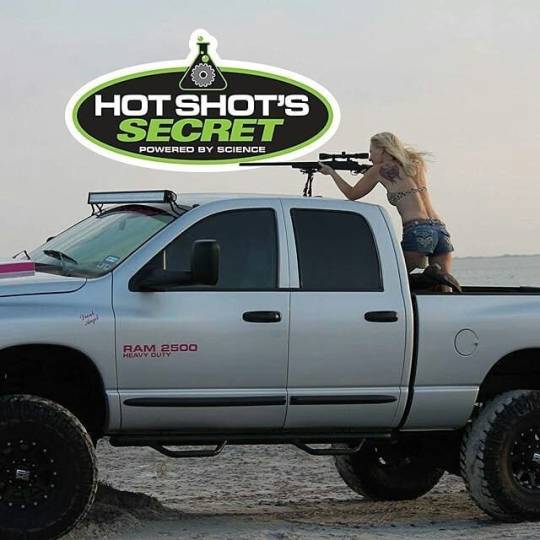
#ShareThePassion Sunday Ram Truck 2500 Heavy Duty #Repost from @hotshotssecret with @regram.app ... "I love Hot Shot's, it has totally reinvented my Dodge and saved me from replacing my injectors." - @taneshastone #diesel #cummins #powerstroke #duramax #trucknation #liftedtrucks #coalkings #nastytrucksnation #initforthepower #nhrda #odss #hotshotssecret #Ram2500 #ramtrucks #dodge #mopar @ramtrucks @fiatchrysler_na @dodgeofficial @officialmopar (at Texas)
#odss#dodge#repost#mopar#powerstroke#liftedtrucks#duramax#ramtrucks#cummins#coalkings#hotshotssecret#nastytrucksnation#ram2500#diesel#nhrda#initforthepower#trucknation#sharethepassion
5 notes
·
View notes